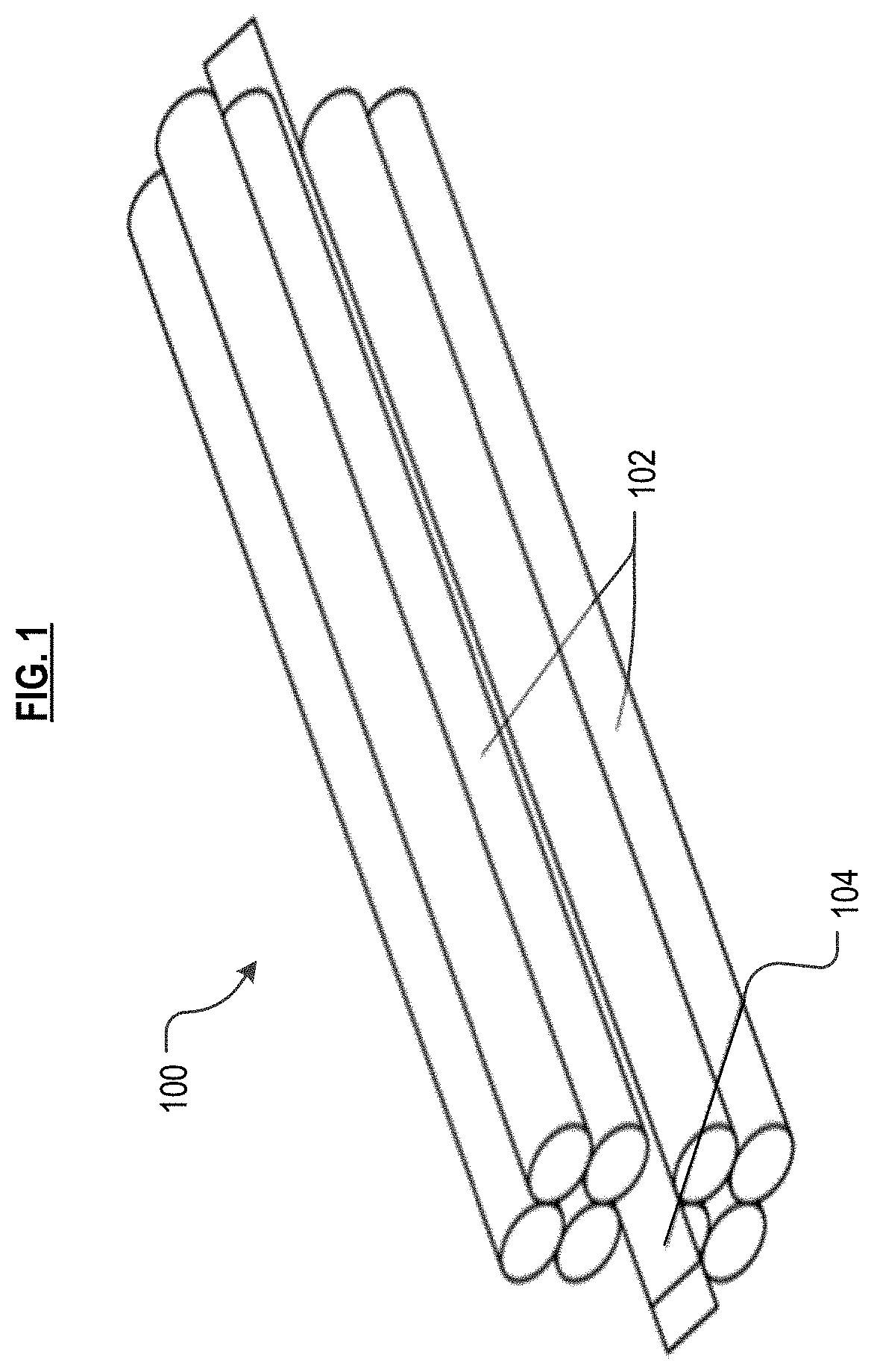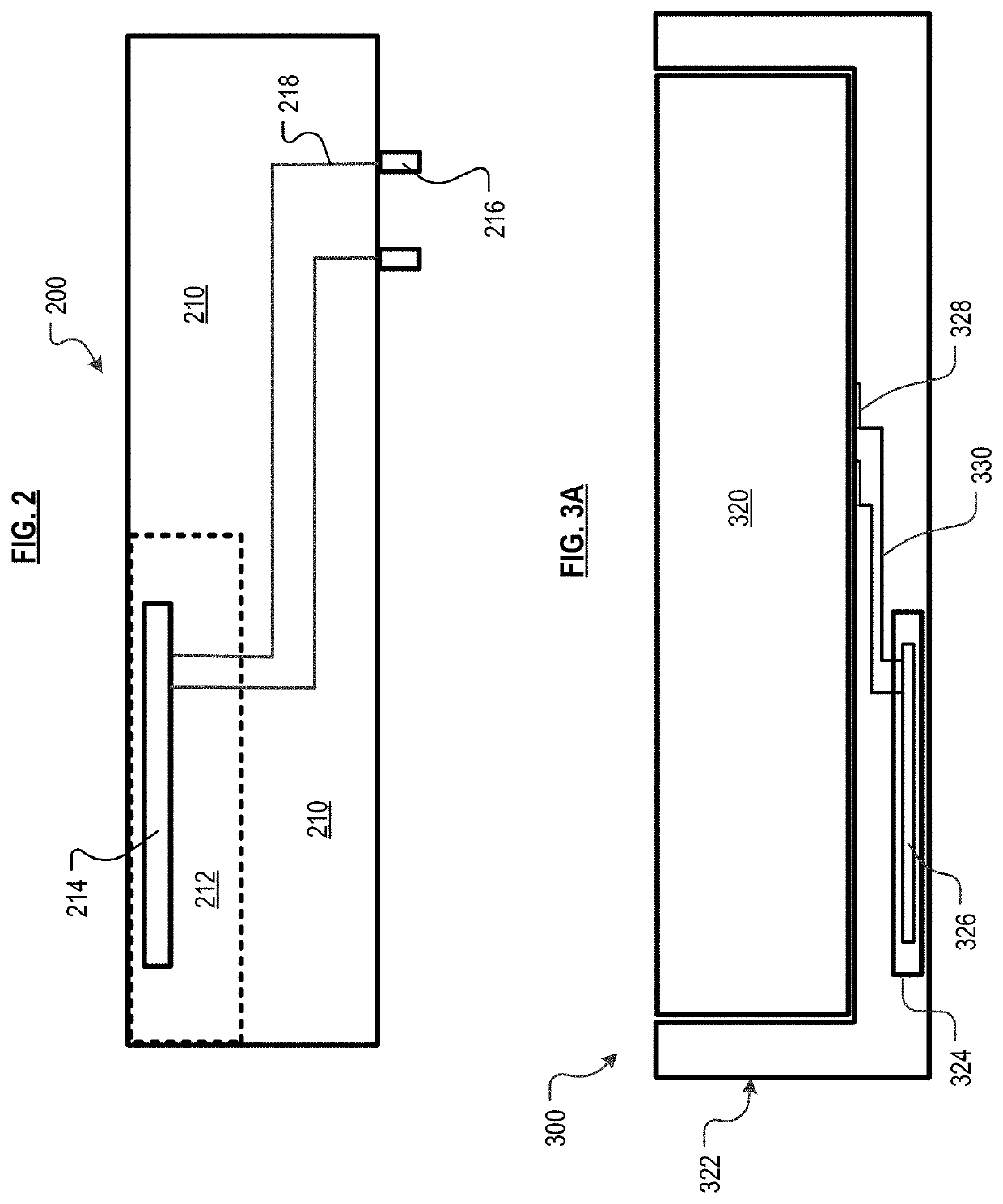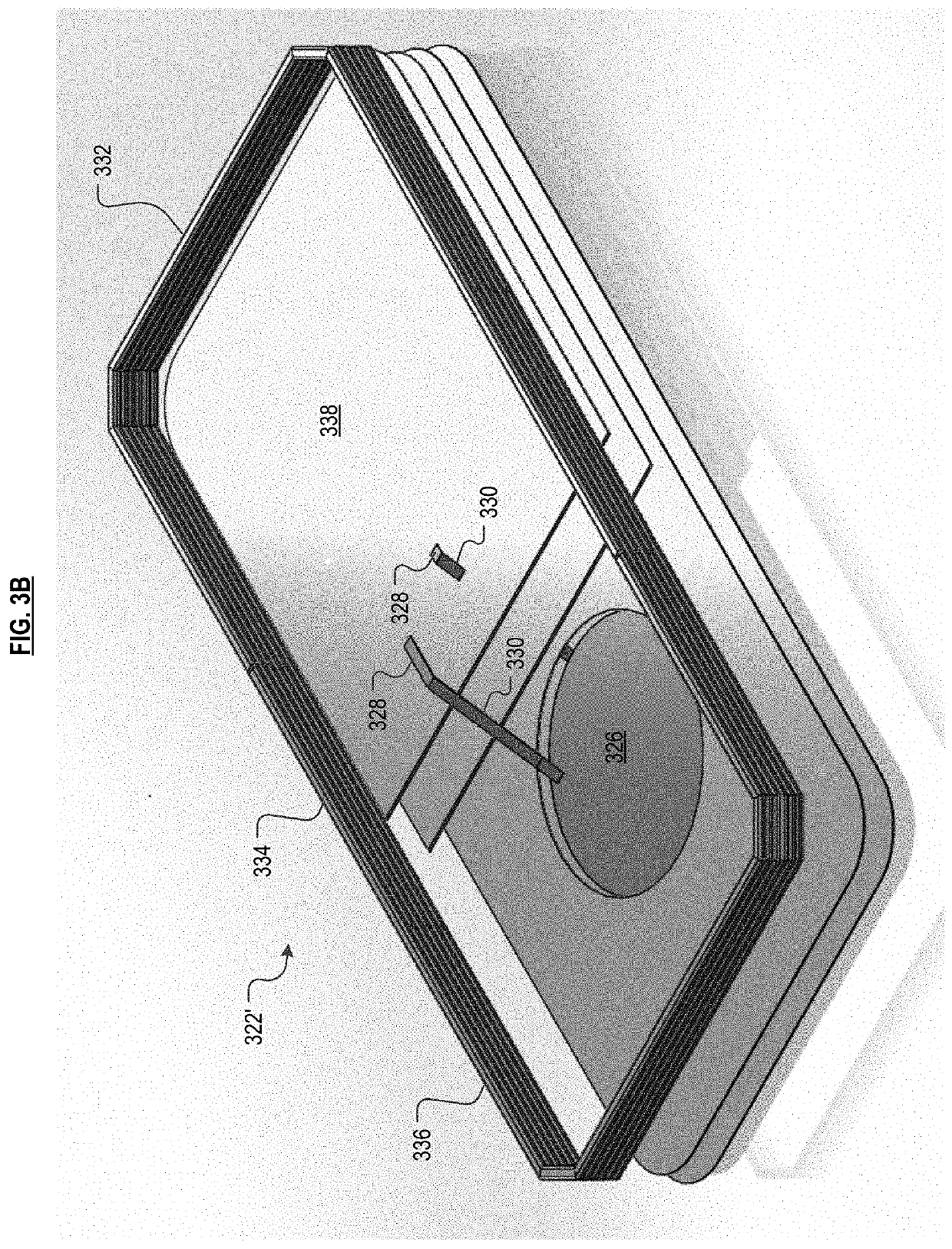Method and Compositions for Embedding Electronics in Fiber-Composite Parts Fabricated via Compression Molding
a technology of fiber-composite parts and additive molding, which is applied in the direction of printed circuit parts, printed circuit non-printed electric components association, other domestic articles, etc., can solve the problems of limited design latitude of molded parts, inability to locate electronic components, and inability to “embed” electronics. , to achieve the effect of increasing design latitud
- Summary
- Abstract
- Description
- Claims
- Application Information
AI Technical Summary
Benefits of technology
Problems solved by technology
Method used
Image
Examples
Embodiment Construction
[0025]Definitions. The following terms are defined for use in this description and the appended claims:[0026]“Tow” means a bundle of fibers (i.e., fiber bundle), and those terms are used interchangeably herein unless otherwise specified. Tows are typically available with fibers numbering in the thousands: a 1K tow, 4K tow, 8K tow, etc.[0027]“Prepreg” means fibers that are impregnated with resin.[0028]“Towpreg” means a fiber bundle (i.e., a tow) that is impregnated with resin.[0029]“Preform” means a bundle of plural, unidirectionally aligned, same-length, resin-wetted fibers. The bundle is often (but not necessarily) sourced from a long length of towpreg. That is, the bundle is a segment of towpreg that has been cut to a desired size and, in many cases, is shaped (e.g., bent, twisted, etc.) to a specific form, as appropriate for the specific part being molded. The cross section of the preform, and the fiber bundle from which it is sourced typically has an aspect ratio (width-to-thick...
PUM
| Property | Measurement | Unit |
|---|---|---|
| aspect ratio | aaaaa | aaaaa |
| aspect ratio | aaaaa | aaaaa |
| pressure | aaaaa | aaaaa |
Abstract
Description
Claims
Application Information
 Login to View More
Login to View More - R&D
- Intellectual Property
- Life Sciences
- Materials
- Tech Scout
- Unparalleled Data Quality
- Higher Quality Content
- 60% Fewer Hallucinations
Browse by: Latest US Patents, China's latest patents, Technical Efficacy Thesaurus, Application Domain, Technology Topic, Popular Technical Reports.
© 2025 PatSnap. All rights reserved.Legal|Privacy policy|Modern Slavery Act Transparency Statement|Sitemap|About US| Contact US: help@patsnap.com



